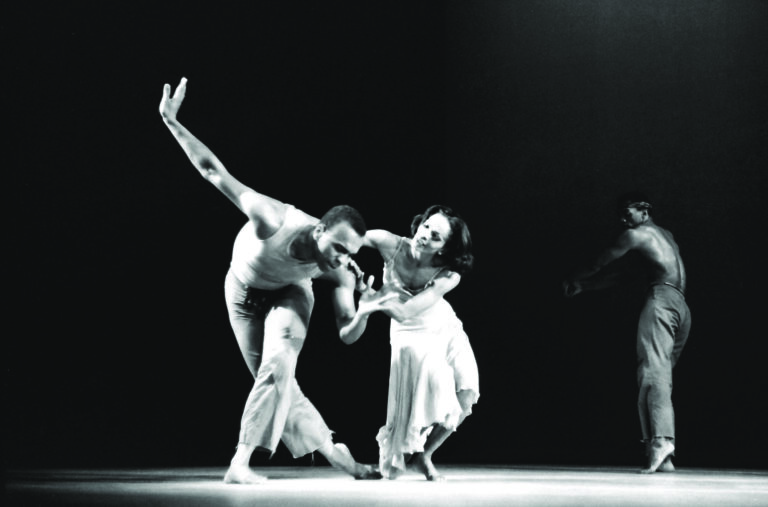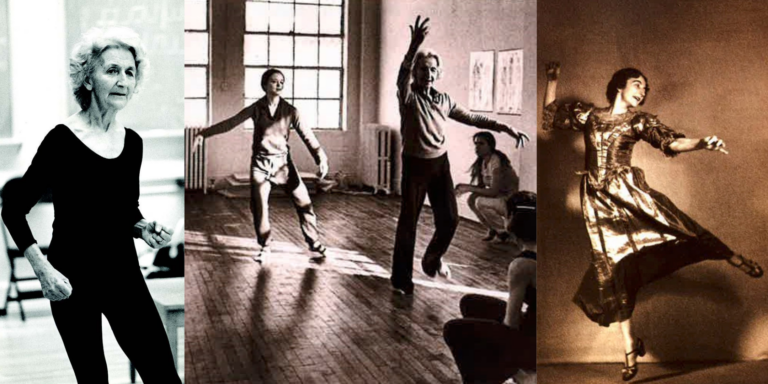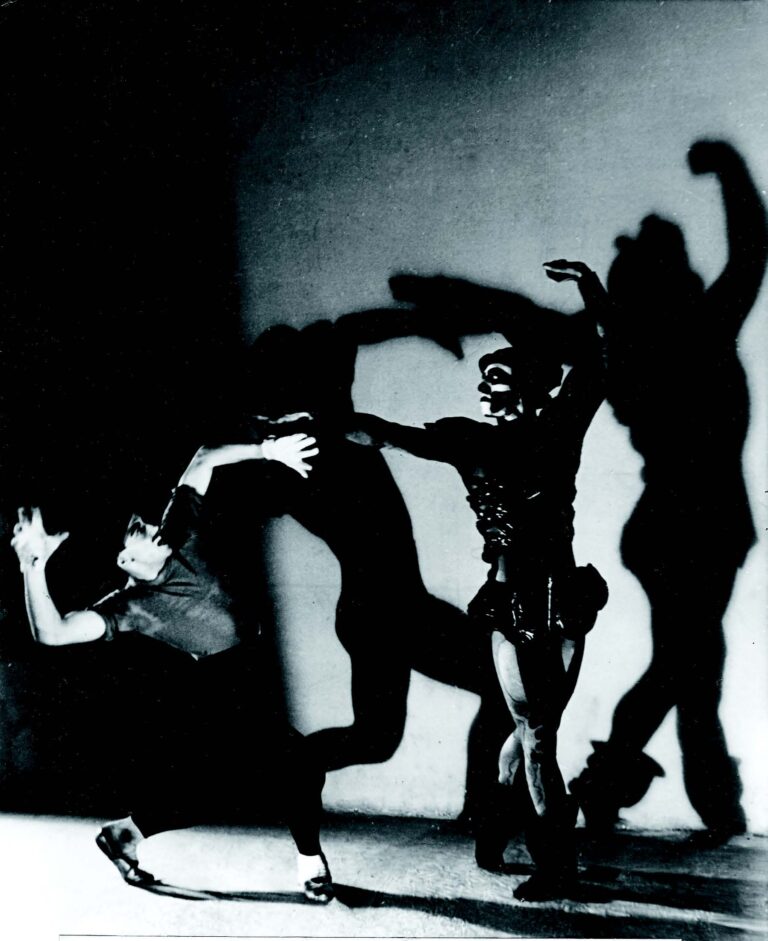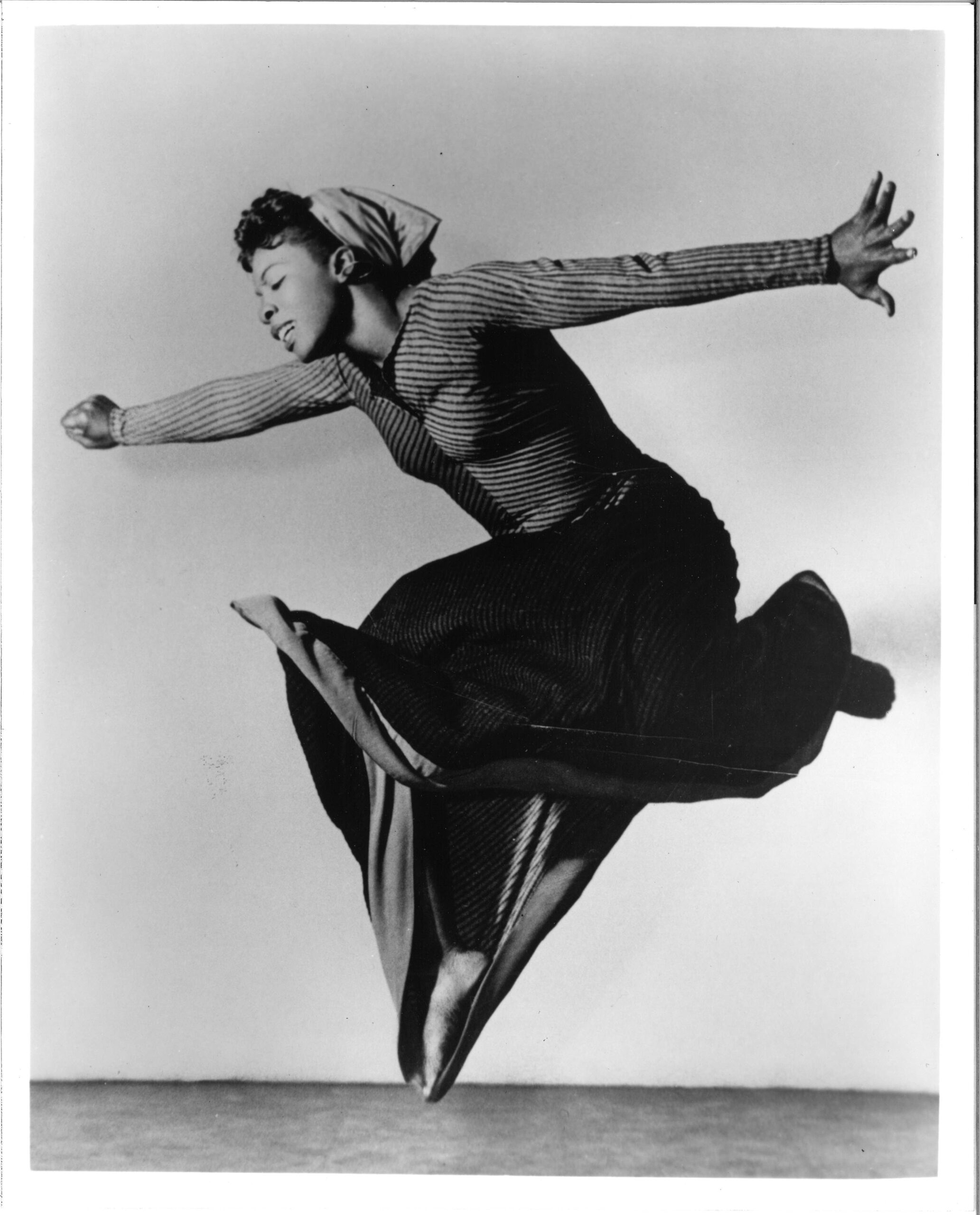
Pearl Eileen Primus (1919–1994) was an ambassador of African dance and the African experience in the Caribbean and United States. Her Trinidadian heritage, combined with extensive studies in the Caribbean, Africa, and the American South, became the lens through which she taught and choreographed. Confronting stereotypes and prejudice through movement, she advocated dance as a means of uniting people against discrimination. “When I dance, I am dancing as a human being, but a human being who has African roots,” she declared of her work.
Primus was born in Port of Spain, Trinidad, to Emily Jackson and Edward Primus. A few years later, her father immigrated to the U.S., with Primus, her mother, and younger brother Edward following one year after in 1924. They settled in Manhattan, where Emily gave birth to a third child, Carl, but later moved to Brooklyn.
Primus attended public schools, including Hunter College High School, before earning a BA in biology and premed from Hunter College in 1940. Aspiring to become a doctor, she applied for jobs as a laboratory technician to earn money for medical school, but was not able to land a job. She made a living through various odd jobs, including vegetable picker, welder, burner, riveter, and health teacher, until the National Youth Administration (part of the Works Progress Administration) gave her a job in the wardrobe department in 1941, working backstage for “America Dances.” Once a spot opened up for a dancer, Primus filled in, and quickly discovered a natural gift for movement and connecting with the audience.
After the NYA program folded, she auditioned for and received a scholarship at the New Dance Group (becoming their first African-American student), where her “qualities of spontaneity, speed, and power were instantly recognized,” wrote Margaret Lloyd, author of The Borzoi Book of Modern Dance. The faculty, which included Jane Dudley, Sophie Maslow, Nona Schurman, and William Bales, greatly influenced Primus with their commitment to using dance as a tool for social reform. Primus also trained with Martha Graham, Charles Weidman, Doris Humphrey, and Louis Horst, from whom she gained an eclectic foundation in modern dance. She later studied ballet and was soon dancing with the NDG performance company.
In 1942, the 92nd Street Y initiated a concert series to showcase the work of young dancers, in which Primus made her theatrical debut on February 14, 1943. She performed her own African Ceremonial, Hard-Time Blues, Rock Daniel, and Strange Fruit, works inspired by her dance training, ethnic background, and cultural research, as well as influential black songwriters and poets like Langston Hughes. This prompted The New York Times dance critic John Martin to rave that “if Miss Primus walked away with the lion’s share of the honors, it was partly because her material was more theatrically effective, but also because she is a remarkably gifted artist.” He later proclaimed her to be “the most distinguished newcomer of the season.”
Such praise, though, caused Primus to doubt her long-term goal of becoming a medical doctor. She turned to Martin for advice, and he encouraged her to look at dancing as a “wonderful healing medium” as well. From then on, Primus focused more exclusively on dance, but continued her studies, taking graduate-level courses.
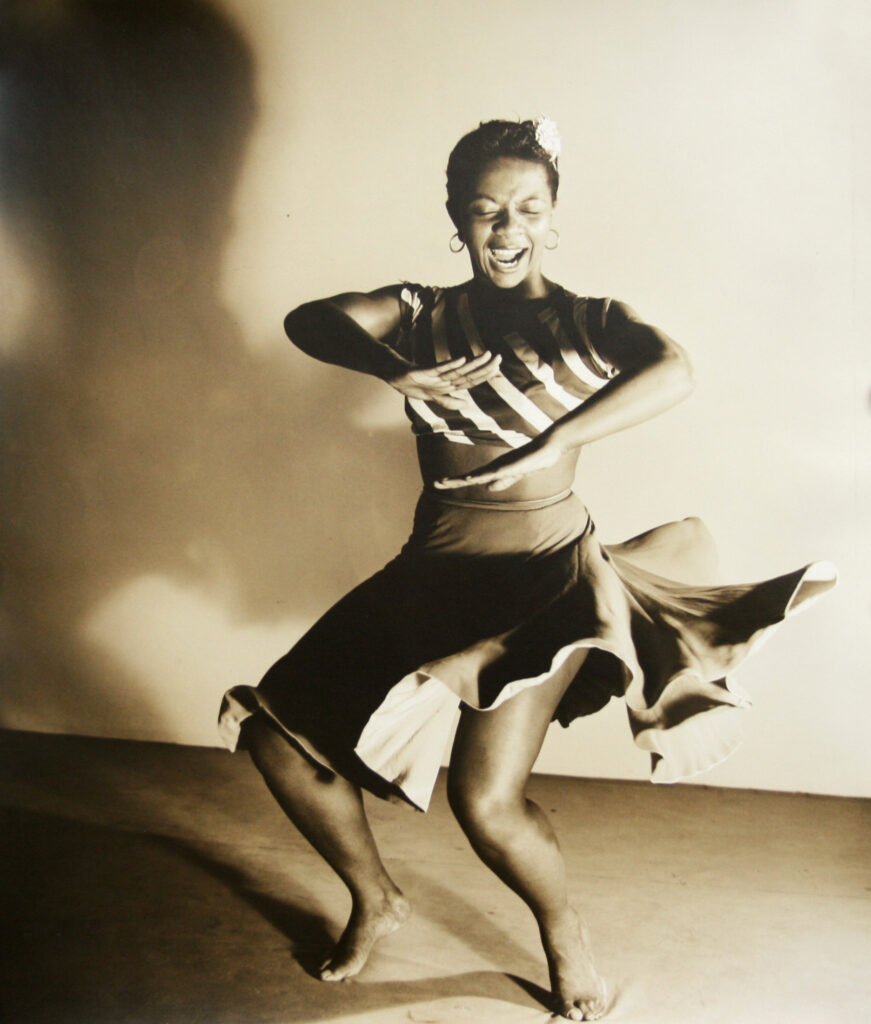
In April 1943, she began an engagement at the Café Society Downtown, a racially integrated nightclub whose small stage she filled with power, emotion, and her famous five-foot-high jumps. During this time, she also performed at Madison Square Garden and Carnegie Hall, and her new dance group, the Primus Company, performed at the Belasco and Roxy Theatres. She danced in the Los Angeles production of Showboat in 1944 and the Broadway revival two years later, followed by the Chicago Civic Opera’s production of The Emperor Jones, which she choreographed, and Broadway’s 1947 Caribbean Carnival.
Primus also felt the need to devote time to performing sociological fieldwork. During the summer of 1944, she toured the South, posing as a migrant worker, “to know my own people where they are suffering the most.” She picked cotton and participated in Black church services’ spontaneous dance and song, in which she recognized African roots. In April 1948, she was awarded a $4,000 grant by the Julius Rosenwald Foundation to travel to Africa. She spent a year visiting and living with the natives of Nigeria, Liberia, Ghana, Angola, Cameroon, Senegal and Zaire, observing and recording their traditional dances. In Nigeria, she was renamed “Omowale,” meaning “child returned home.”
Primus married award-winning film and television director Yael Woll in 1950, but the union did not last—they were separated after three years. In 1954 she met dancer/choreographer Percival Borde while traveling through Trinidad, and they married a year later. They welcomed their son, Onwin, in 1955.
In 1959, Primus received an MA in educational sociology from New York University and returned to Liberia, where she was named director of the country’s Performing Arts Center. In 1963, she and Borde opened the Primus-Borde School of Primal Dance in NYC, where she developed methods of teaching cross-culturally. Three years later, she initiated an experimental learning project that was funded by the U.S. Department of Education and placed in NYC schools to further test her methods. It was a soaring success.
In 1974, Primus staged Fanga (1949) and The Wedding (1961), theatricalizations of African ritual dances, for the Alvin Ailey American Dance Theater. Ted Pollen, an Ailey scholarship student at the time, remembers her as a gracious teacher who, unlike many others, did not use harsh criticisms to motivate dancers. “She showed us how to improve ourselves as dancers and artists by tapping into what dance means to people who are not professional dancers; dance as a way of life as opposed to a way of making a living.”
Still eager to further her academic knowledge, Primus received her PhD in anthropology from NYU in 1978, becoming the university’s first student to fulfill a language requirement with dance. In 1979, she and Borde founded the Pearl Primus Dance Language Institute in New Rochelle, New York, where they offered classes that blended African and Caribbean dance forms with modern and ballet techniques. Their performance group was called Earth Theater. Borde passed away later that year.
Throughout her career, Primus taught at numerous universities, including NYU, Hunter College, the State University of New York at Buffalo, Howard University, and Five College Dance Department. She remained active in the dance community until succumbing to diabetes at her New Rochelle home on October 29, 1994.
In acknowledgement of her immense impact and extraordinary vision, Primus received many honors, including an honorary doctorate from Spelman College, the Distinguished Service Award from the Association of American Anthropologists, and the National Medal of Arts.
Primus was a force of unparalleled energy and drive, who challenged societal norms with masterful work that honored her ancestors and enlightened generations to come. “I dance not to entertain, but to help people better understand each other . . . because through dance I have experienced the wordless joy of freedom,” she said of her life’s work. “I see it more fully now for my people and for all people everywhere.”
Additional Resources
African Dance: An Artistic, Historical and Philosophical Inquiry, edited by Kariamu Welsh-Asante, Africa World Press, 1996
“American Dancer, Negro,” by Harriet Jackson, Dance Magazine, September 1966
Black Dance: From 1619 to Today, by Lynne Fauley Emery, Princeton Book Company, 1989
The Borzoi Book of Modern Dance, by Margaret Lloyd, Princeton Book Company Publishers, 1987
“The Dance: Five Artists,” by John Martin, The New York Times, February 21, 1943
“The Dance Laurels—Award No. 2,” by John Martin, The New York Times, August 1, 1943
Dancing Many Drums: Excavations in African American Dance, edited by Thomas F. DeFrantz, University of Wisconsin Press, 2002
Modern Bodies: Dance and American Modernism, by Julia L. Foulkes, The University of North Carolina Press, 2002
“Little Fast Feet: The Story of the Pilgrimage of Pearl Primus to Africa,” by Doris Hering, [ital: Dance Magazine, July 1950
“Earth Theatre,” by Pearl Primus, Theatre Arts, December 1950
“Pearl Primus: Foremost Dancer to Unveil New Exciting Work Based on Year-long Study of African Peoples,” Ebony Magazine, January 1951
